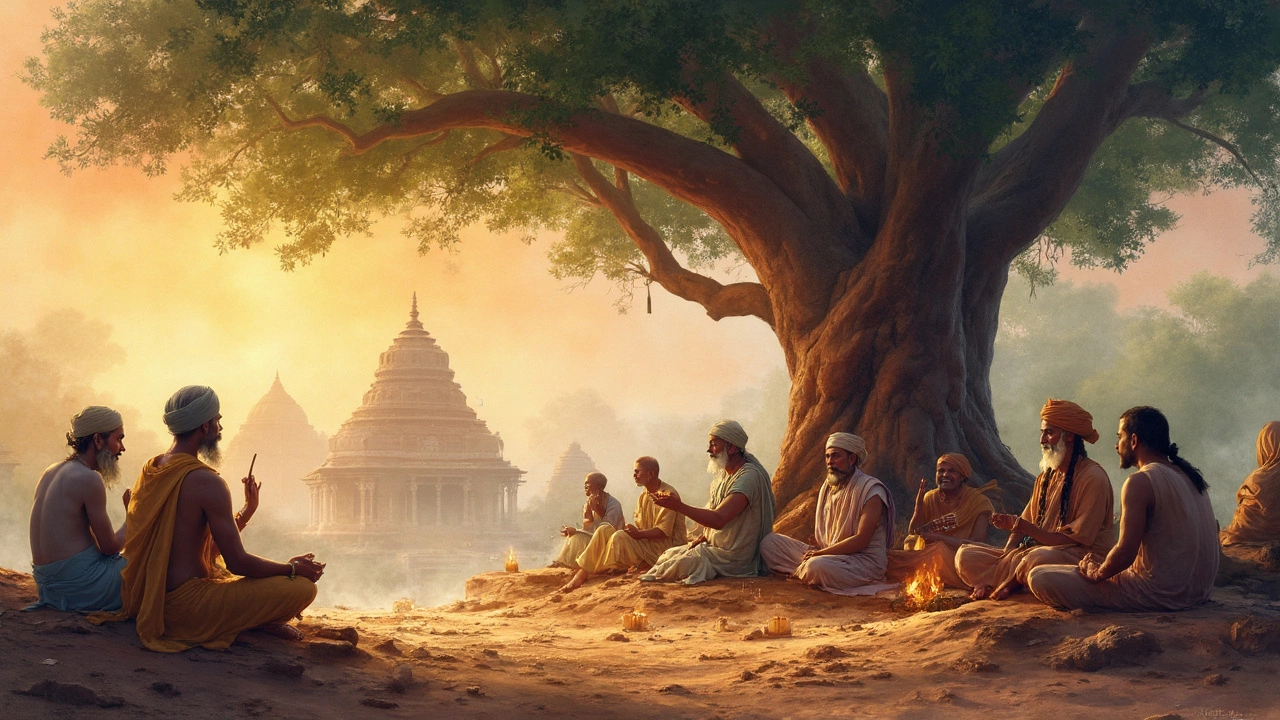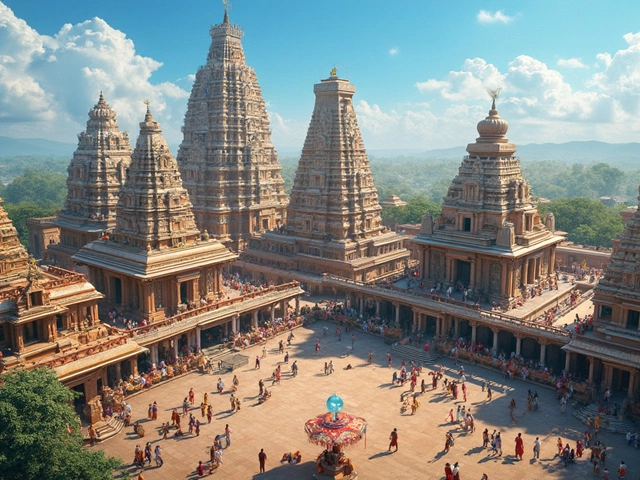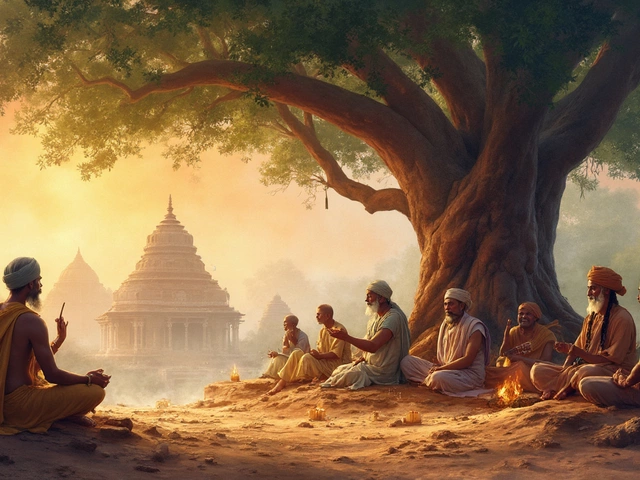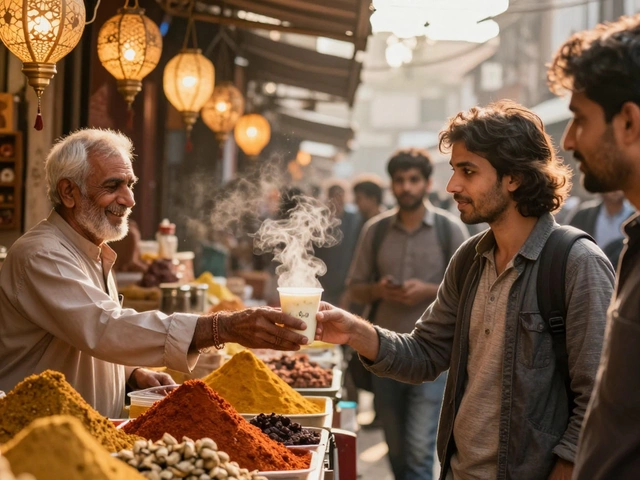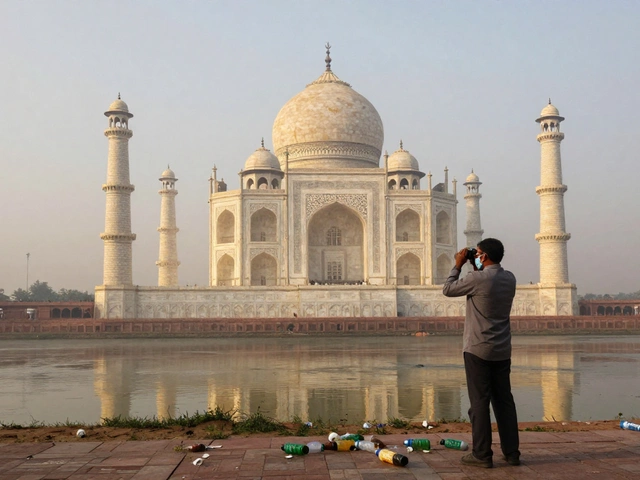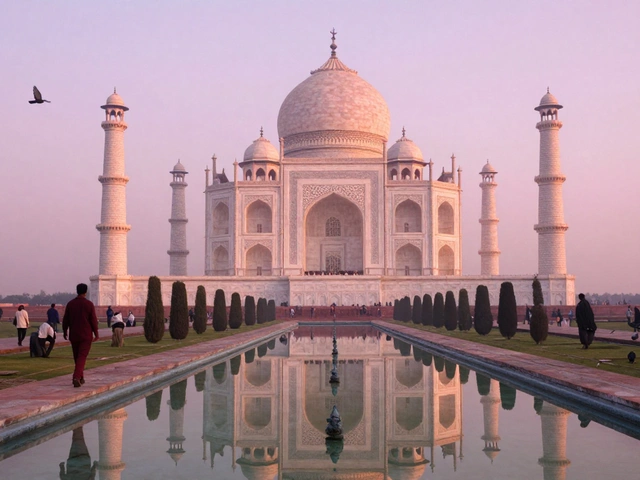Ask who started Hinduism and you’ll never get a simple answer. There’s no single founder or golden date when it all began. It’s not like Christianity’s Jesus or Buddhism’s Buddha. Instead, Hinduism is a wild patchwork—stories, ideas, rituals—woven together over thousands of years.
This actually makes every Hindu temple way more interesting to explore. Each one holds layers of history and belief, not just the name of a famous starter. When you walk into an ancient temple in India, you step right into chapters of human history—nothing is as straightforward as it looks.
Thinking about a temple tour? Here’s a fact: some temples are older than the earliest pyramids. If you dig how history, art, and spirituality collide, make space for a few holy sites on your journey. Wearing comfy clothes, going early in the morning, and reading up about the local legends add a whole new dimension to your trip. Trust me—every step leads to deeper stories.
- The Myth of a Single Founder
- How Hinduism Grew Over Centuries
- The Heartbeat of Temples in Hindu Life
- Tips for Meaningful Temple Tours
The Myth of a Single Founder
People often ask: “Who’s the founder of Hinduism?” That’s the twist—there isn’t one. Hinduism is more like a living river than a neatly built house with a single architect. There’s no prophet or single teacher who kicked things off. Instead, Hinduism grew slowly, shaped by a mind-boggling mix of ideas from different people, tribes, and places across India.
Other major religions have one name you can pin on their origins—Jesus for Christianity, Buddha for Buddhism, Prophet Muhammad for Islam. But with Hinduism, the oldest recorded texts—the Vedas—go back to around 1500 BCE, and even those build on much older traditions. The stories, beliefs, and practices evolved over time, passed down in families and by word of mouth.
Hinduism even lacks a specific moment of origin. Take a look at how this breaks down compared to some other world faiths:
| Religion | Founder | Estimated Origin Period |
|---|---|---|
| Hinduism | None (collective growth) | Before 1500 BCE |
| Buddhism | Siddhartha Gautama (Buddha) | 5th century BCE |
| Christianity | Jesus Christ | 1st century CE |
| Islam | Prophet Muhammad | 7th century CE |
What’s really interesting is how this lawless origin gives Hinduism its flexibility. It soaks up new beliefs like a sponge, making each region’s traditions and temple rituals a bit different from the next. Instead of one rule book, temple practices change as you move from north to south or east to west in India. Some temples might worship Krishna, others Shiva or Devi, with local stories woven through.
So, next time you visit a Hindu temple, remember—you’re not stepping into the legacy of one founder, but a living mosaic of countless thinkers, teachers, and everyday people who shaped the world’s oldest surviving religion.
How Hinduism Grew Over Centuries
Unlike religions born from a single revelation or figure, Hinduism founder is a question that doesn't fit the usual pattern. This faith evolved over thousands of years along the banks of the Indus and later the Ganges rivers. It stretches back more than 4,000 years, possibly making it the oldest living religion in the world.
Most historians agree: the first roots appeared with the Indus Valley Civilization (around 2500 BCE). People here worshipped nature, saw the sacred in rivers, animals, trees, and practiced fertility rituals. Fast forward a few centuries, when the Indo-Aryans arrived, blending their Sanskrit language and Vedic hymns with local ideas. This mash-up gave birth to the Vedas — the earliest scriptures of Hinduism, still chanted in temples today.
The religion didn’t freeze in time. As Indian society changed, so did Hindu beliefs. The Upanishads (from about 800-500 BCE) pushed new ideas—karma, reincarnation, and finding the divine within. Later, stories and morals from epic texts like the Ramayana and Mahabharata brought the faith alive in every home. This kept Hinduism fresh and personal, not stuck in dusty old books.
Honestly, Hinduism is like a giant open-source project. Over time, it picked up creative new gods, philosophies, and even yoga practices. Different regions shaped unique temple rituals, festivals, and local legends. There’s no single answer to what “real” Hinduism is: it morphs, adapts, and welcomes new ideas.
| Time Period | Key Developments |
|---|---|
| 2500–1500 BCE | Indus Valley culture: early rituals, nature worship |
| 1500–600 BCE | Vedic age: creation of Vedas, fire sacrifices |
| 800–500 BCE | Upanishads: meditation, karma, reincarnation |
| 400 BCE–400 CE | Epics like Ramayana & Mahabharata, rise of devotion |
| 500 CE–today | Regional traditions, temple-building boom, festivals |
So, when you’re visiting Indian temples, remember — you’re seeing the result of thousands of years of shared human ideas. There’s no single person behind it, just an ever-growing community making meaning out of life, one story at a time.
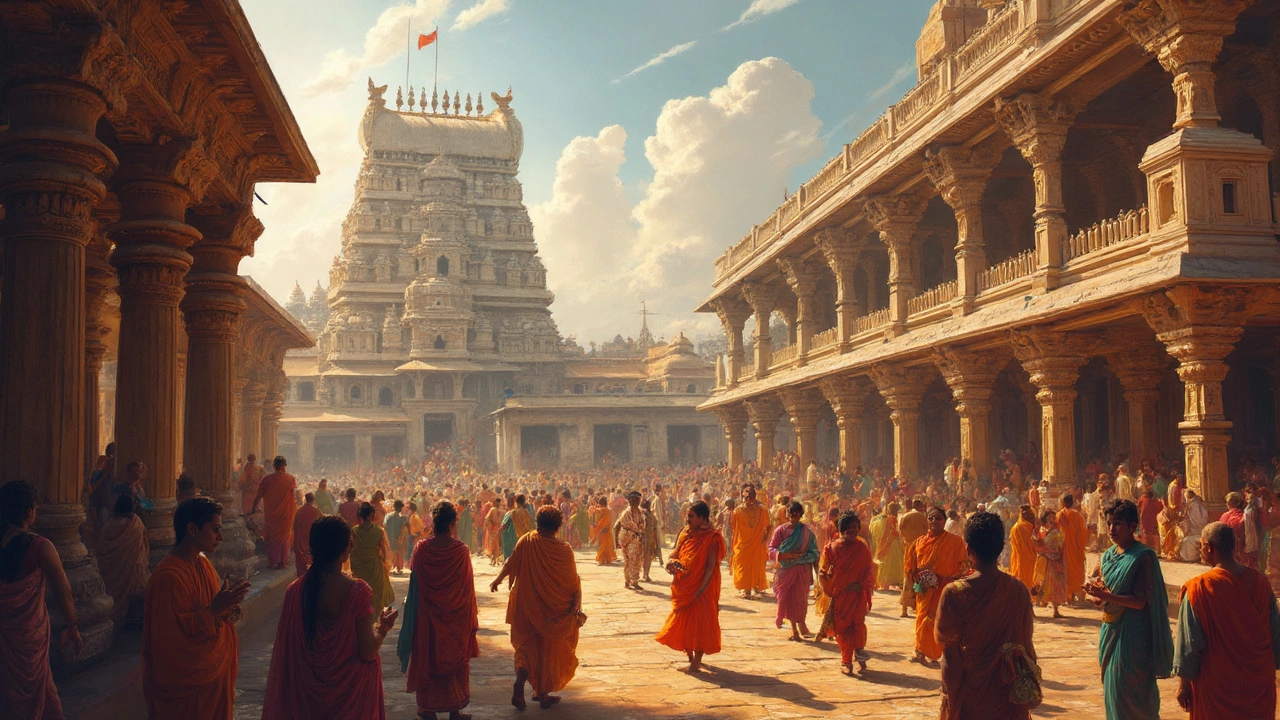
The Heartbeat of Temples in Hindu Life
Temples in India aren't just stone buildings. They’re the beating heart of daily life for millions. From the neighborhood shrines in Mumbai to the grand sprawl of Tirupati or Varanasi’s Kashi Vishwanath, Hindu temples mix history, tradition, and community. You can't really grasp Hinduism without stepping inside at least a few.
The role of temples goes beyond prayers. Temples often run schools, kitchens that feed thousands daily, and even hospitals in some regions. The famous Akshardham Temple in Delhi, for example, holds cultural shows and runs social service projects. Meanwhile, the Meenakshi Temple in Madurai sees around 15,000 visitors every day, with more than a million during festivals. That’s not just faith—that’s a movement.
Here’s a breakdown of how temples shape life around them:
- Festivals: Every big Hindu festival—Diwali, Holi, Navaratri—centers around temple rituals, music, and bright parades.
- Daily routines: Many families drop by their local temple before work or school—it’s part of the rhythm of life, not just special occasions.
- Social support: Temples help during tough times by running charity kitchens (like the langar at Golden Temple, which serves over 100,000 free meals each day).
- Art and heritage: A lot of Indian music, dance, and sculpture grew out of temple culture.
People don’t just visit for spiritual reasons. Temples are key meeting spots. Weddings, debates, even village decisions happen there. You’ll see families, solo travelers, and even foreign visitors side by side. One BBC article sums it up well:
“Hindu temples are not just sanctuaries for prayer; they are focal points of culture and community, places where every generation comes together.”
If you want some quick facts to help you plan a temple trip, here’s a mini-compare of major sites:
| Temple Name | Location | Visitors Per Day | Special Feature |
|---|---|---|---|
| Tirupati Balaji | Andhra Pradesh | ~50,000 | Richest temple, free meals |
| Kashi Vishwanath | Varanasi | ~10,000 | Ganges rituals |
| Meenakshi Temple | Madurai | ~15,000 | Colorful architecture |
| Golden Temple | Amritsar | 100,000+ | Langar (community kitchen) |
If you’re touring, figure out if your visit falls on a festival. Crowds can be intense, but the energy is unbelievable. Don’t forget modest clothing, and check if cameras are allowed—most temples are strict about that. Most important? Walk in with curiosity, not just to snap photos, but to feel that temple heartbeat for yourself.
Tips for Meaningful Temple Tours
Temple tours in India aren’t just sightseeing—they’re a real dive into local life, ancient culture, and living spirituality. Small details can make the whole experience richer (and way less confusing), especially if it’s your first time. Here’s how to get the most out of every visit.
- Learn the basics before you go. Each temple is unique. For example, the Meenakshi Temple in Madurai covers almost 15 acres and is famous for its colorful towers covered in thousands of sculptures. A bit of reading before you walk in helps you spot what’s special right away.
- Dress respectfully. Most temples require you to cover your shoulders and knees—sometimes even your head. Both men and women may need to remove footwear before entering the inner sanctum. Many big temples offer shoe racks out front.
- Follow local customs quietly. There’s no shouting, running, or taking loud phone calls inside. Some places, like the Jagannath Temple in Puri, don’t allow non-Hindus in the main sanctum. Always check posted rules—they’re there for a reason.
- Give yourself time to soak it in. Instead of ticking off as many places as possible, pick a few and spend longer at each. The Sri Venkateswara Temple in Tirupati, for example, draws up to 50,000 visitors a day. Lines can be long, but the people-watching and ceremonies are unforgettable if you’re patient.
- Bring a small donation. Almost every temple has a donation box—these keep the place running and fund huge charity kitchens, like the Golden Temple in Amritsar which churns out food for up to 100,000 people daily.
- Hire a local guide if you want deeper stories. You’ll hear legends and facts you’d never pick up from a guidebook.
Thinking about timing? Early mornings are the best—they’re calmer, and the rituals feel more personal. Avoid religious festivals if crowds aren’t your thing, but if you crave energy and color, they can be wild and unforgettable.
| Temple | Daily Visitors | Special Rule |
|---|---|---|
| Tirupati Balaji, Andhra Pradesh | 50,000 | Offerings (laddoo) |
| Golden Temple, Amritsar | 100,000 | Head covering needed |
| Meenakshi Temple, Madurai | 20,000 | No photography in sanctum |
Don’t be afraid to ask locals about small rituals or things you see. People love to share stories about their traditions. That’s the heart of Hinduism founder and its living legacy—it’s stitched into daily life, not just books and monuments.
